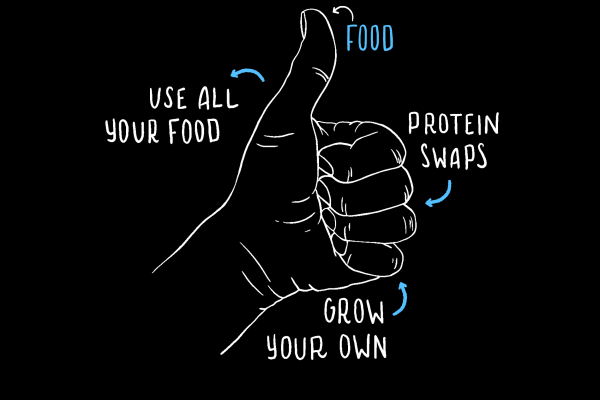By The UnSchool Team
We can all agree that there are fundamental failures in the global food system, with over a third of all food produced being wasted and millions of people being affected by food deserts. What systems changes could be introduced to create solutions in different ways?From extreme hunger, under-nourishment, and food waste through to how we grow, process, transport, and consume food, there are plenty of opportunities for improvement throughout the many sub-systems of the global food system. In this UnSchool Journal article, we’ll take a detailed look at the EAT-Lancet’s recent report that explored whether we could feed a healthy diet for a future population of 10 billion people, while remaining within planetary boundaries. We’ll also take a high-level look into the burning question about how you can swap up your food choices to contribute more equitable, sustainable food systems change around the world.
What is the EAT-Lancet Commission — and why does this report matter?
The EAT-Lancet report is the first time, we have had scientific targets for both healthy human diets and sustainable food production, based on a rigorous, comprehensive review of the most recent scientific literature. The team behind this report is the EAT-Lancet Commission, which is a part of EAT, “a non-profit startup dedicated to transforming our global food system through sound science, impatient disruption, and novel partnerships.”The EAT-Lancet Commission is a team of 37 multi-disciplinary scientists from 16 countries who set out to tackle the systems issues of hunger, obesity, and environmental degradation by discovering how people should eat to solve all of these issues — keeping in mind that we are projected to rise to 9.8 billion humans on Earth by 2050. The result of their efforts shares an important micro-action that we can adopt as individuals to work toward a better collective whole via systems change: the “planetary health diet.”

How does the “planetary health diet” work?
Visualize a plate that is halfway filled with fruits and vegetables. Now, on the other half, imagine whole grains, plant proteins like lentils and beans, and unsaturated plant oils. Note that while being plant-based, it’s also a flexible plan, and it does allow for modest amounts of meat and dairy (as well as a little added sugar) — although being vegan and vegetarian are both options for healthy individuals and a healthy planet.

- Diversify your diet to include more plant-based products, and cook more at home
- Increase your intake of plant-based foods and explore the joys of non animal protein rich options like beans, chickpeas, lentils and peas (they are delicious!)
- Embrace a flexitarian, reducetarian, vegetarian, or vegan diet
- Shop for local seasonal food that is produced sustainably, such as your local farmers’ market or package-free store
- Buy sustainably produced foods. They may cost a bit more, but if you invest in quality over quantity, you are offering a better impact to your health and the planet
- Buy only what you can finish, save, or cook in bulk to freeze, in order to avoid food waste and avoid adding methane into the atmosphere
- Avoid excessive packaging by buying fresh and taking your own reusable packaging and bags to stores. Re-use any packaging as long as possible if you are not able to avoid it in certain cases
- Ask for healthy and and sustainable food options from your the people you buy food and other products from
- Grow some food yourself by starting or joining an urban garden, community garden, school garden, or kitchen garden
- Support organizations, policies, and programs that promote sustainable food systems – speak up about them, ask questions, and get involved
To read the full report Food in the Anthropocene: the EAT–Lancet Commission on healthy diets from sustainable food systems (Walter Willett et al.), visit here. To discover how to reframe sustainability and think critically about everyday impacts, check out this course at UnSchool Online.

The most important focus for planetary health lies in the reduction of red meat consumption, due to the major environmental impacts associated with livestock farming. As reported by WEF: “According to the UN’s Food and Agriculture Organization, emissions from global livestock account for 14.5% of anthropogenic (from human activity) greenhouse gases, while the World Bank chart above shows that, in 2014, 70% of freshwater withdrawal was used for agriculture – projected to rise by a further 15% by 2050.” Of course, minimizing red meat consumption is also optimal for human health, given that eating high amounts of red meat is associated with higher risk for type 2 diabetes, coronary heart disease, stroke and certain cancers.
While loads of research was conducted in order to arrive at these new guidelines, the gist of the planetary health diet as a means to create food systems change remains pretty simplistic: increase consumption of nutritious plant-based foods (fruits, veg, nuts, legumes, and whole grains), and decrease consumption of red meat, sugar, and refined grains.
This doesn’t seem too radical to us, as we have already adopted a vegetable centric food philosophy at all UnSchool events! Our recent collaboration with the UNEP shows the five areas of everyday action you can take to reduce your footprint and contribute to a more sustainable life.




